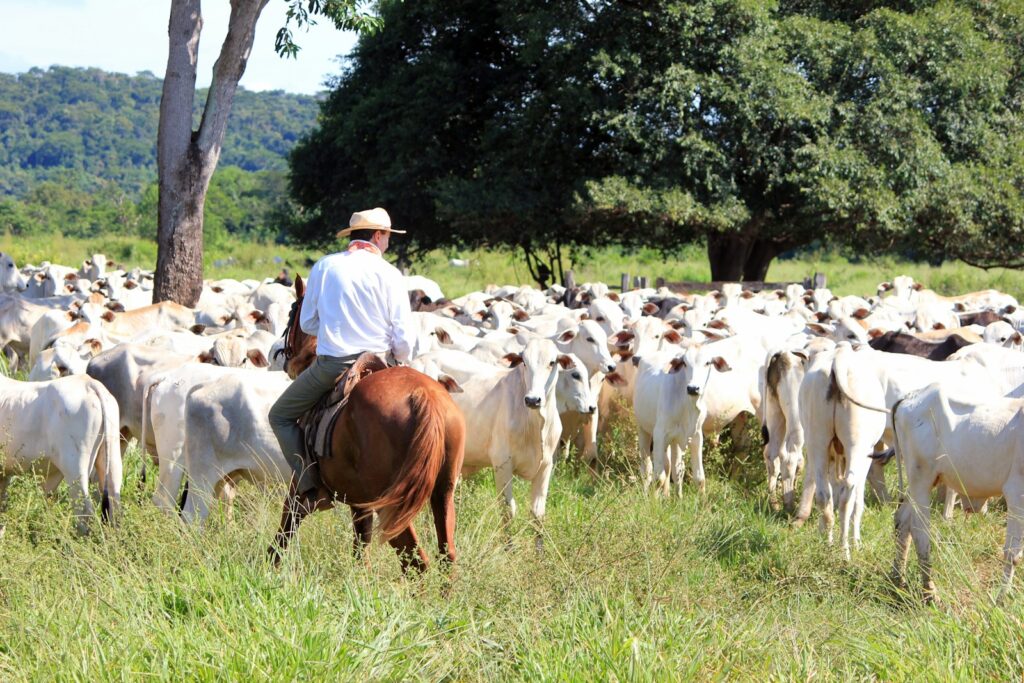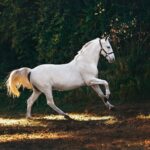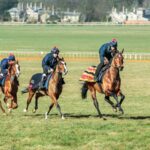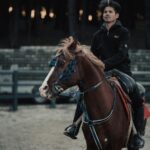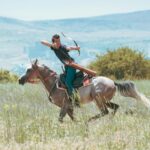Ranch horses and sport horses may share the same species, but their training methodologies and end goals couldn’t be more different. Ranch horses are working partners bred for practicality, endurance, and versatility in handling livestock and navigating rough terrain. Sport horses, by contrast, are athletes trained for specific competitive disciplines with precise movements and specialized skills. This fundamental difference in purpose drives every aspect of their training from start to finish. The methodologies, equipment, expected behaviors, and even the relationship between horse and handler vary significantly between these two worlds of equine development. Let’s explore these fascinating contrasts and understand why a champion dressage horse would likely struggle on a cattle drive, while a seasoned ranch horse might seem out of place in a dressage arena.
The Fundamental Purpose: Working vs. Competing
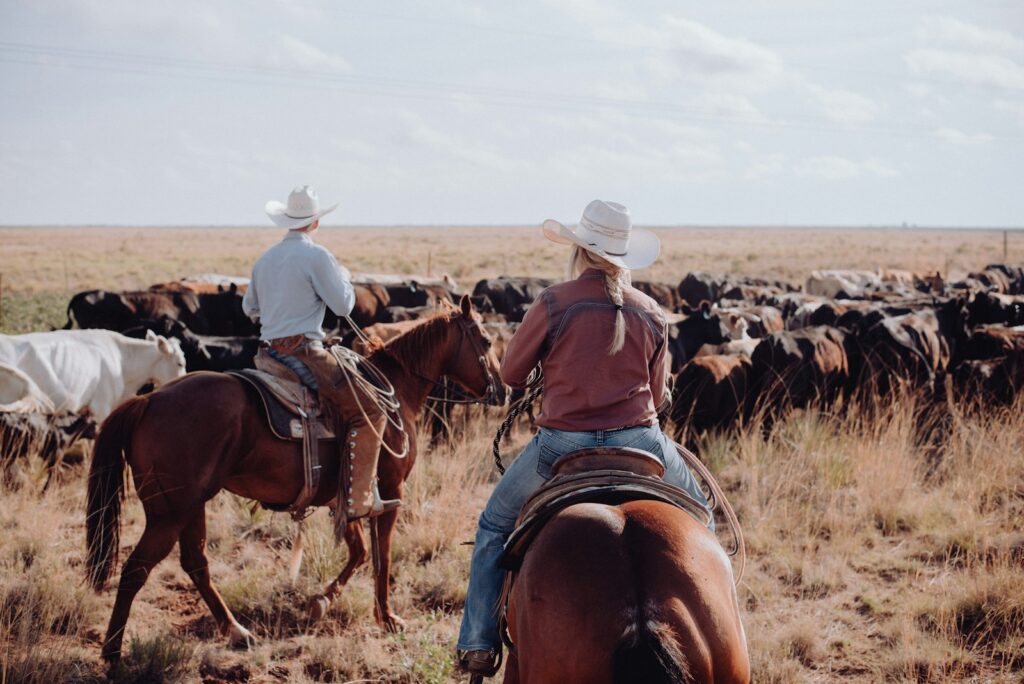
Ranch horses are trained with a clear utilitarian purpose – to be reliable working partners that can handle various jobs around a ranching operation. Their training focuses on developing practical skills that directly translate to daily ranch work, including moving cattle, navigating difficult terrain, and withstanding long working days in all weather conditions. By contrast, sport horses are athletes trained specifically for competitive disciplines such as dressage, show jumping, eventing, or reining, where precision, specialized movements, and aesthetic qualities are highly valued. This fundamental difference in purpose affects every aspect of training from ground handling to finished skills. While ranch horses must be versatile generalists, sport horses often become highly specialized performers in their specific competitive discipline. This distinction creates entirely different approaches to what constitutes a “well-trained” horse in each context.
Early Training Priorities and Foundations

Ranch horse training typically begins with an emphasis on developing a calm, sensible temperament that can handle environmental stressors like weather, wildlife, and unpredictable conditions. Young ranch prospects often start with exposure to the everyday sights and sounds of ranch life – machinery, livestock, and various outdoor environments – creating horses that are mentally adaptable and unflappable. Sport horse training, by comparison, often begins in more controlled environments where precision and correctness of movement are emphasized from the start. Young sport horses typically focus on proper movement patterns, balanced gaits, and responsiveness to subtle rider cues in arena settings. While ranch colts might be expected to cross creeks or navigate through brush early in their training, young sport horses might spend months developing perfect circles or transitions between gaits in a manicured arena. This foundational difference reflects their divergent career paths and the skills they’ll need to succeed.
Training Timeline and Age Considerations
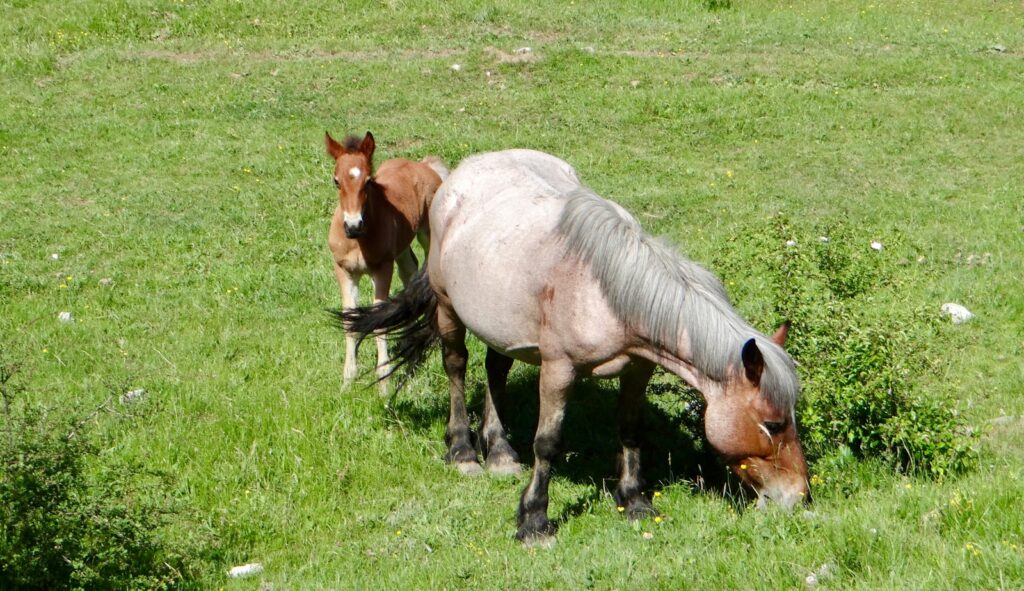
Ranch horses typically begin their training earlier and progress faster toward practical work than their sport counterparts. It’s not uncommon for ranch horses to start light groundwork at age two and be performing meaningful ranch work by age three or four, with the expectation that they’ll continue developing skills throughout their working life. This relatively accelerated timeline reflects the economic reality of ranching operations, where horses need to earn their keep through useful work. Sport horses, especially those in European disciplines like dressage and jumping, often follow a more extended developmental timeline. Many aren’t started under saddle until age three or four, with their training progressing methodically over several years before reaching advanced competitive levels. This slower approach prioritizes physical development and precise skill acquisition over immediate utility. Olympic-level sport horses may not reach their competitive prime until age 10-12, whereas ranch horses are often in their working prime much earlier.
Desired Temperament and Mindset

The ideal temperament for ranch horses and sport horses differs significantly based on their working environments. Ranch horses are valued for their level-headed, independent thinking abilities and “good sense” – they need to make sound decisions even without constant rider input. A ranch horse that panics easily or requires micromanagement becomes a liability rather than an asset in working situations. Sport horses, while still needing good temperaments, are typically selected and trained for their responsiveness, sensitivity to aids, and ability to perform precise movements on command. Many top competition disciplines reward horses that display expressive, energetic movements that would be considered unnecessarily flashy in ranch contexts. These temperament differences extend to how horses handle pressure – ranch horses must tolerate physical pressure from cattle, environmental stressors, and sometimes firm handling, while sport horses are typically trained to respond to increasingly subtle cues with precision and finesse.
Equipment and Tack Differences
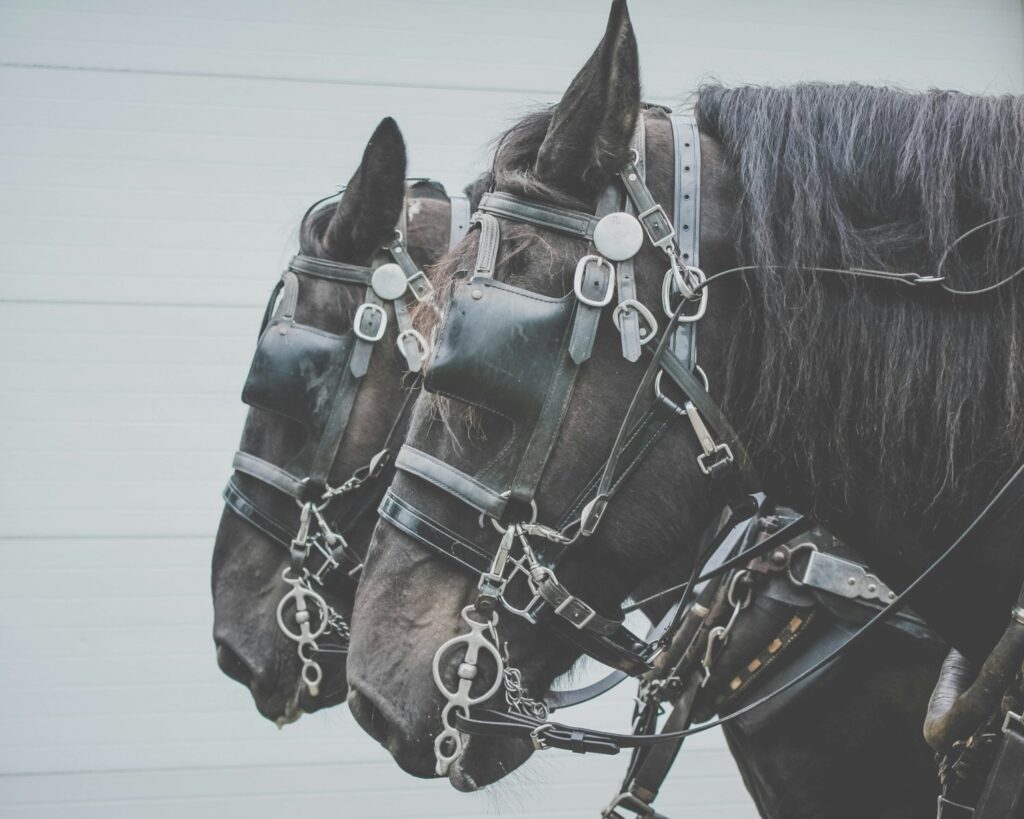
The equipment used in training reflects the different demands placed on ranch versus sport horses. Ranch horses are typically trained in western tack, including western saddles with substantial trees designed for security during long days and unpredictable situations. Their bridles often feature shanked bits that allow one-handed riding (leaving the other hand free for roping or other tasks) and curb pressure for clear communication when quick responses are needed. Sport horses generally use discipline-specific equipment like dressage saddles, jumping saddles, or specialized tack appropriate for their competitive focus. Their training often progresses through various bits and auxiliary equipment designed to develop specific carriage, movement patterns, or jumping form. While ranch training equipment prioritizes durability, security, and practical communication, sport horse equipment often focuses on allowing subtle communication and optimal positioning for specific movements or jumps.
Autonomy vs. Precision Control

One of the starkest contrasts between ranch and sport horse training lies in the level of autonomy each horse is expected to develop. Ranch horses are deliberately trained to think independently and make good decisions without constant rider input – they must be able to track a cow, choose secure footing, or maintain their balance even when the rider is focused on other tasks. Good ranch horses develop what cowboys often call “cow sense” or “natural working ability” that allows them to partially self-direct their work. Sport horses, by contrast, are typically trained for precise responsiveness to rider aids, with emphasis on the rider maintaining control of each movement and decision. In disciplines like dressage or show jumping, horses perform specific patterns or courses under continuous rider guidance, with independent decision-making generally discouraged except in very specific circumstances. This fundamental difference reflects the working reality of each type of horse – a ranch horse often works in unpredictable environments where human micromanagement is impossible, while sport horses perform in standardized arenas where rider control is paramount.
Training for Versatility vs. Specialization
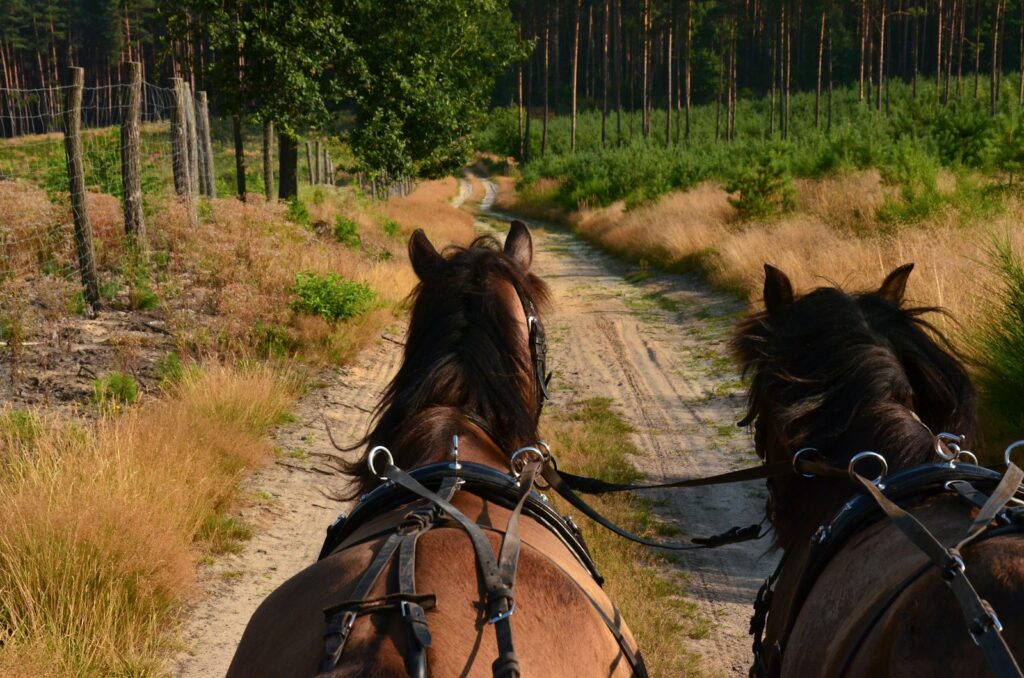
Ranch horses are the quintessential generalists of the equine world, trained to perform a wide variety of tasks with competence rather than specializing in any single skill. A good ranch horse might rope cattle in the morning, drag logs in the afternoon, and carry its rider through rough country to check fences by evening – requiring a broad skill set and adaptable mindset. Training for this versatility involves exposing young horses to many different situations and teaching them to approach new challenges with confidence. Sport horses, conversely, typically follow training programs specifically designed to excel in their particular discipline, whether it’s jumping, dressage, or reining. Their training becomes increasingly specialized as they advance, focusing on perfecting the specific movements, techniques, and responses valued in their competitive arena. While some sport disciplines like eventing require multiple skills, even these multi-phase competitions involve specialized training for each component rather than the broad adaptability required of ranch horses.
Movement and Gait Priorities

The ideal way of moving differs dramatically between ranch and sport horses, with each trained to optimize movement patterns suited to their purpose. Ranch horses are valued for efficiency of movement – smooth, ground-covering gaits that conserve energy over long days and rough terrain. Their training emphasizes practical, sustainable movement that prioritizes surefootedness and stamina over flash or extreme collection. Sport horses, particularly in European disciplines like dressage and hunter/jumper events, are trained to develop expressive, elevated movement with significant suspension and engagement. Dressage horses specifically develop highly collected gaits that, while beautiful and technically difficult, would be impractically energy-intensive in a ranch context. Even within western disciplines, the difference is clear – compare the practical, efficient movement of a working ranch horse with the animated, highly collected movement of a western pleasure show horse, and you’re witnessing two entirely different training philosophies in action.
Exposure to Environmental Variables

Ranch horse training deliberately incorporates environmental challenges and variables that might be considered distractions in sport horse contexts. Young ranch horses are routinely exposed to wildlife, weather extremes, water crossings, varied terrain, and the unpredictable movements of livestock as an essential part of their education. This environmental conditioning creates horses that remain calm and functional regardless of circumstances – a critical safety factor for both horse and rider in remote working situations. Sport horse training typically occurs in more controlled environments like arenas or groomed fields, with environmental variables introduced gradually and carefully. When sport horses are exposed to new environments (like competition venues), the focus is on helping them maintain their trained responses despite these “distractions” rather than teaching them to navigate the environment itself. This fundamental difference means ranch horses develop a broader environmental comfort zone, while sport horses develop deeper precision within a more limited range of conditions.
Livestock Interaction and Cow Sense
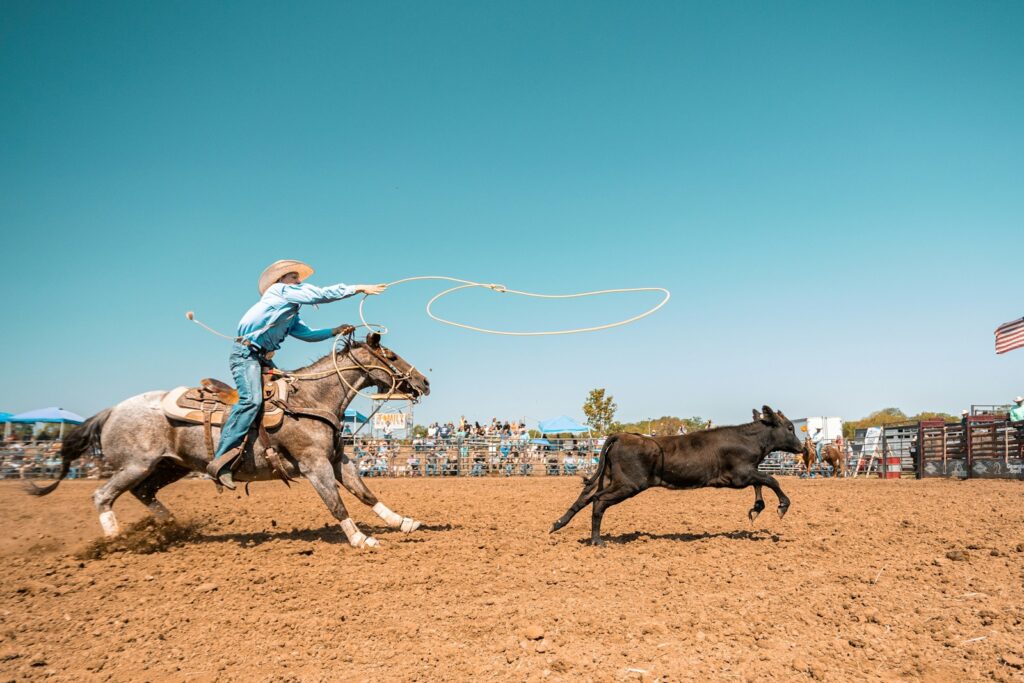
Perhaps the most distinctive element of ranch horse training is the development of “cow sense” – the ability to read and anticipate the movements of cattle. Ranch horses learn to track, sort, and control cattle through careful exposure and training, developing an almost instinctive understanding of bovine behavior. This specialized skill involves incremental training from simply following a cow without rider direction to eventually anticipating and preventing cattle movements before they occur. Sport horses, with rare exceptions like cutting or reining horses (which are specialized competition horses with ranch origins), receive little or no livestock exposure during their training. The ability to work cattle represents a significant intelligence and training component that isn’t measured in most competitive equestrian sports but is essential in ranch contexts. Some ranch horse trainers insist this skill can’t be entirely taught – that the best stock horses possess an innate ability that training merely refines and directs.
Physical Conditioning Differences

The physical conditioning regimens for ranch and sport horses differ substantially in both approach and desired outcomes. Ranch horses develop endurance and practical strength through their actual work – long days covering varied terrain and performing practical tasks naturally condition them for the demands of ranch life. Their fitness develops functionally rather than through programmed exercise sessions, with an emphasis on stamina, soundness over rough ground, and the ability to work effectively for extended periods. Sport horses typically follow structured conditioning programs designed specifically to develop the physical attributes needed for their discipline – cardiovascular fitness for eventers, explosive power for jumpers, or core strength and flexibility for dressage horses. Their fitness training often includes specialized exercises like collected work, gymnastics jumping grids, or interval training that have no direct parallel in ranch work. While both types of horses develop athletic ability, the specific type of fitness and how it’s achieved varies dramatically between these contexts.
Training for Different Rider Positions and Aids

Ranch horses are trained to respond to a fundamentally different set of rider positions and aids than most sport horses. Western ranch horses typically learn to work primarily off seat and leg cues, with rein aids used more sparingly, allowing riders to maintain a relaxed one-handed position while leaving the other hand free for roping or other tasks. They’re taught to respond to weight shifts and changes in seat pressure as primary directional cues, with neck reining rather than direct reining as they advance. Sport horses, particularly in English disciplines, are trained for more consistent contact with the bit and response to refined, often bilateral rein aids coordinated with precise leg and weight cues. Dressage horses, for example, learn to respond to subtle weight shifts, precise leg positions, and nuanced rein contact that create the highly collected, controlled movements required in competition. These different communication systems reflect the practical needs of each horse’s job – independent responsiveness for ranch work versus precise control for sport.
Measuring Success: Different Standards of Achievement
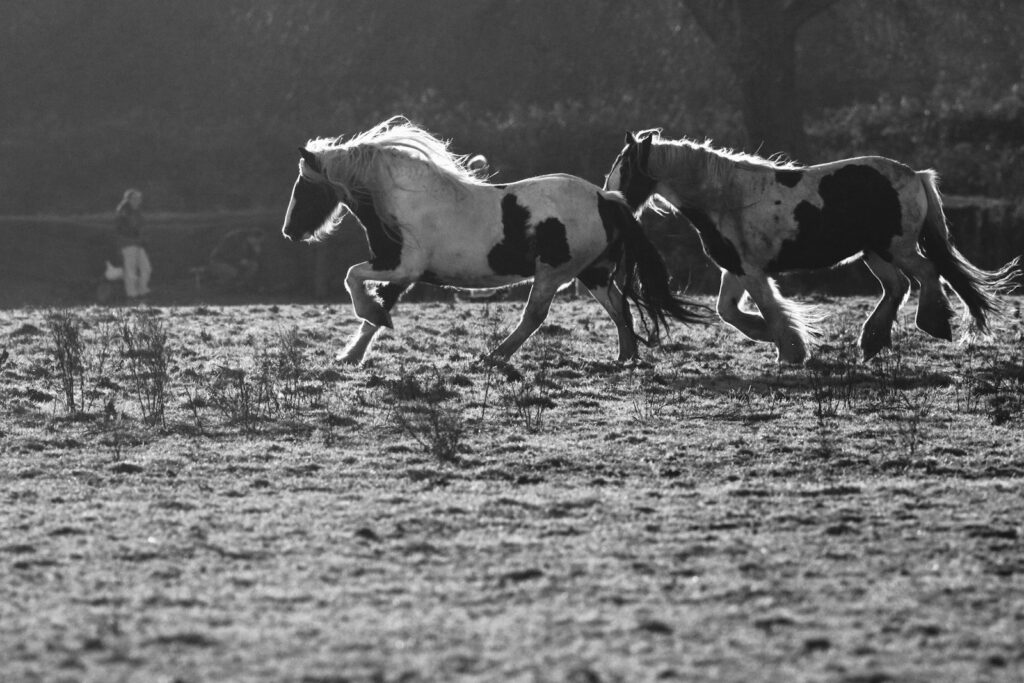
The benchmarks for success differ dramatically between ranch and sport horse training programs. Ranch horses are evaluated primarily on their practical effectiveness in real-world working situations – can they perform necessary ranch tasks reliably, safely, and efficiently? Their value comes from functional abilities like tracking and turning cattle, navigating difficult terrain, or remaining calm in chaotic situations. Sport horses are judged against formalized standards within their competitive discipline, with success measured through scores, rankings, and placements in structured competitions. Their training progress is often marked by advancing through established levels with specific technical requirements at each stage. While ranch horses might be informally tested through daily work or ranch horse competitions that simulate working tasks, sport horses face judges who evaluate their movement quality, technical execution, and adherence to discipline-specific standards. These different metrics of success ultimately shape every aspect of how these horses are selected, developed, and valued throughout their careers.
Ranch and sport horses represent two distinct approaches to equine training that reflect their divergent purposes and working environments. Ranch horses develop as practical, versatile partners with independence and good judgment, while sport horses become specialized athletes performing precise movements under careful rider control. Neither approach is inherently superior to the other – they simply reflect different human needs and different equine roles. What remains consistent across both worlds is the remarkable adaptability of the horse as a species, capable of developing such diverse skill sets through appropriate training. Whether working cattle on a remote rangeland or performing collected passage in an international dressage arena, these horses demonstrate the extraordinary partnership between humans and equines that has evolved over thousands of years to serve our changing needs.

